

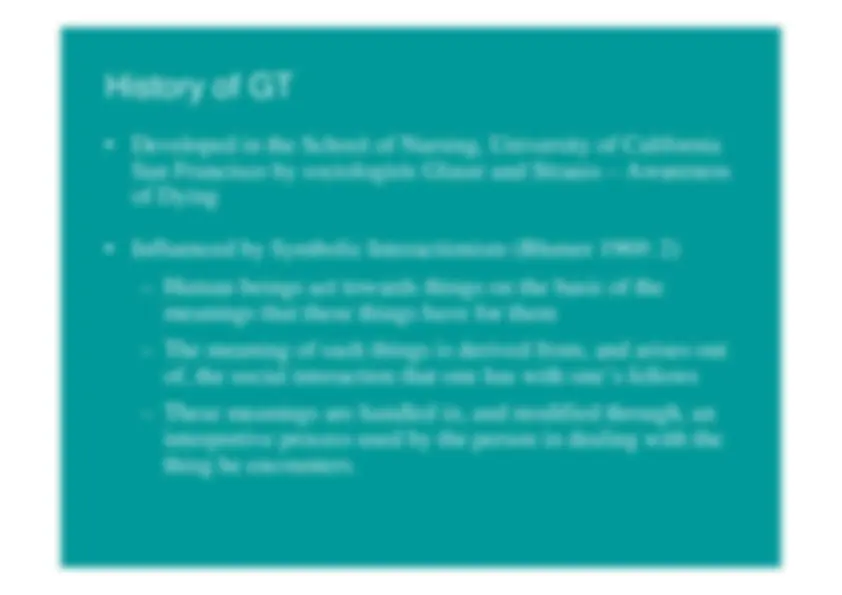
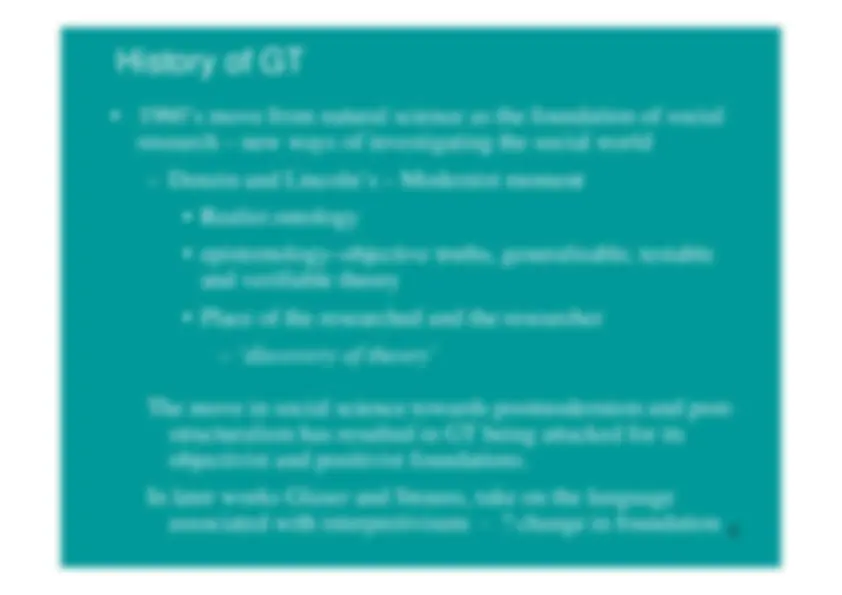
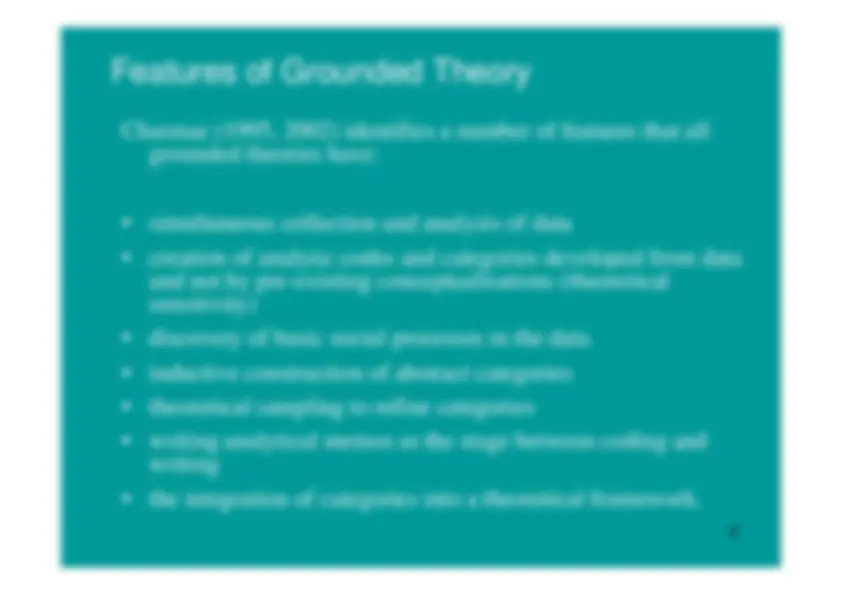

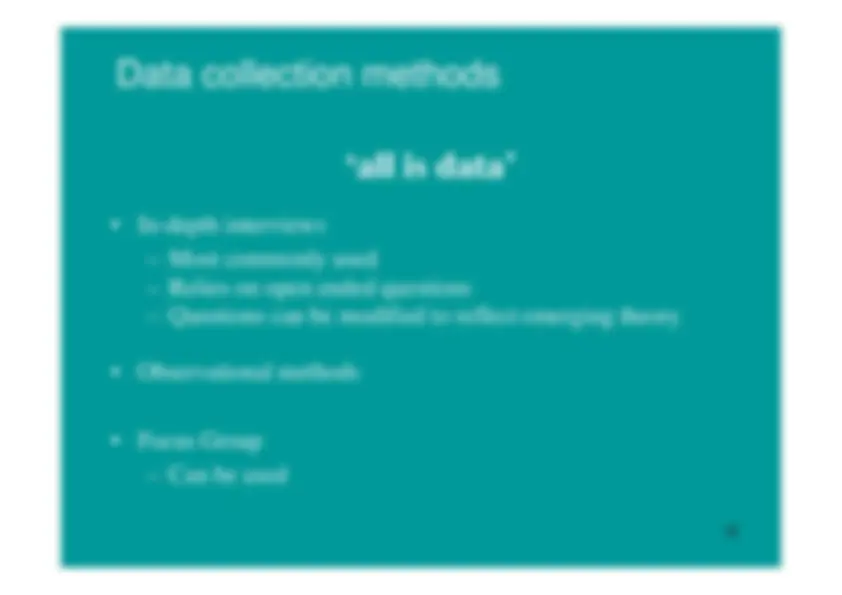

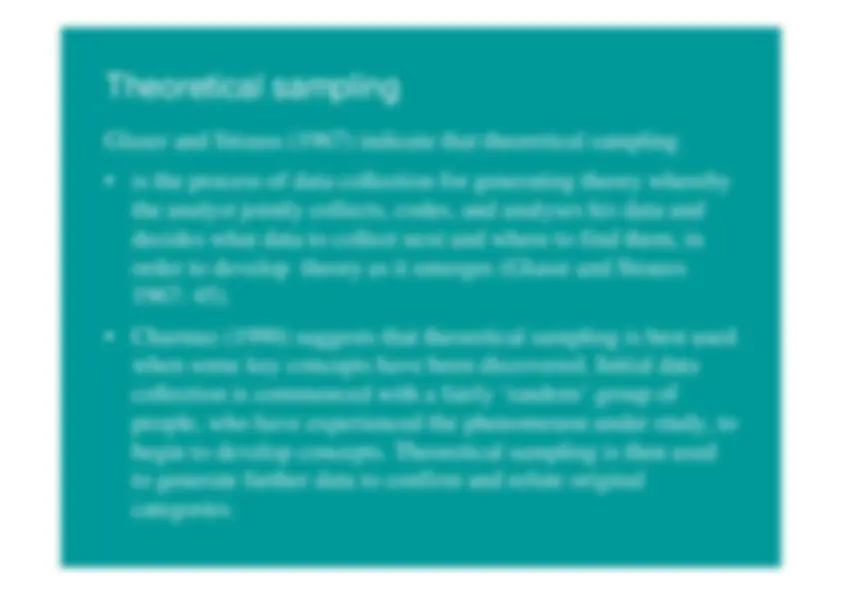
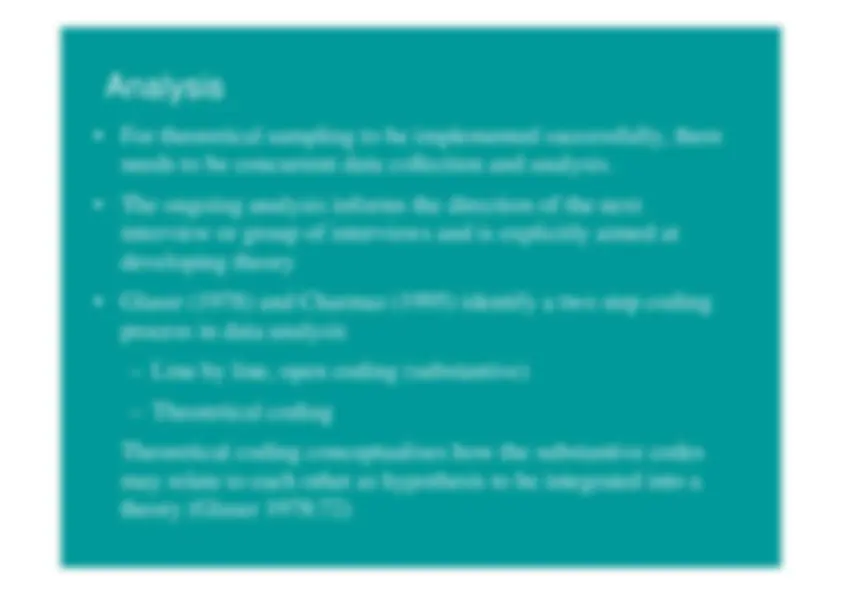
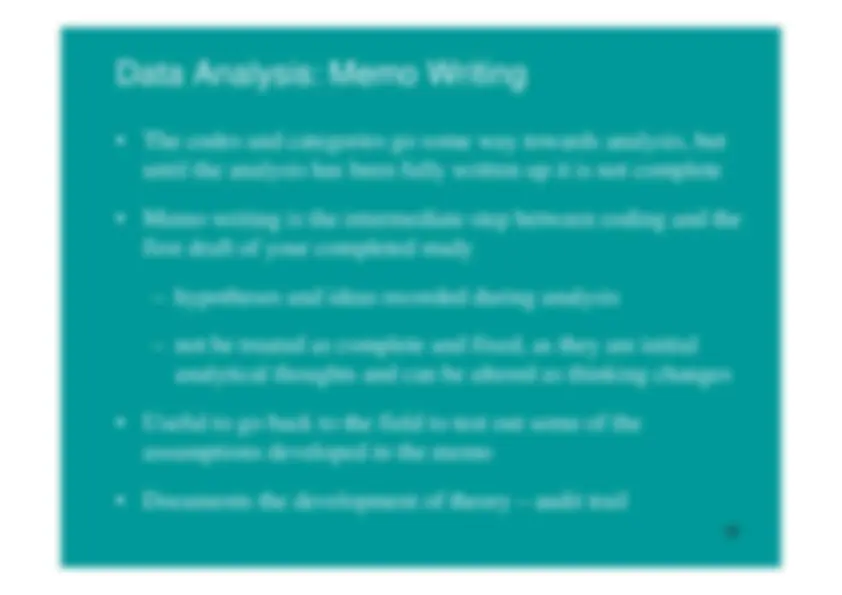

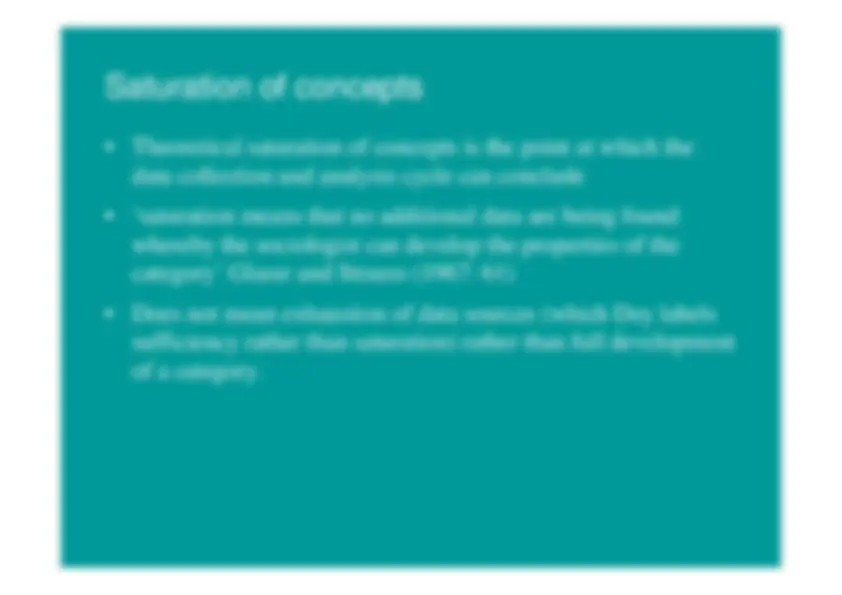
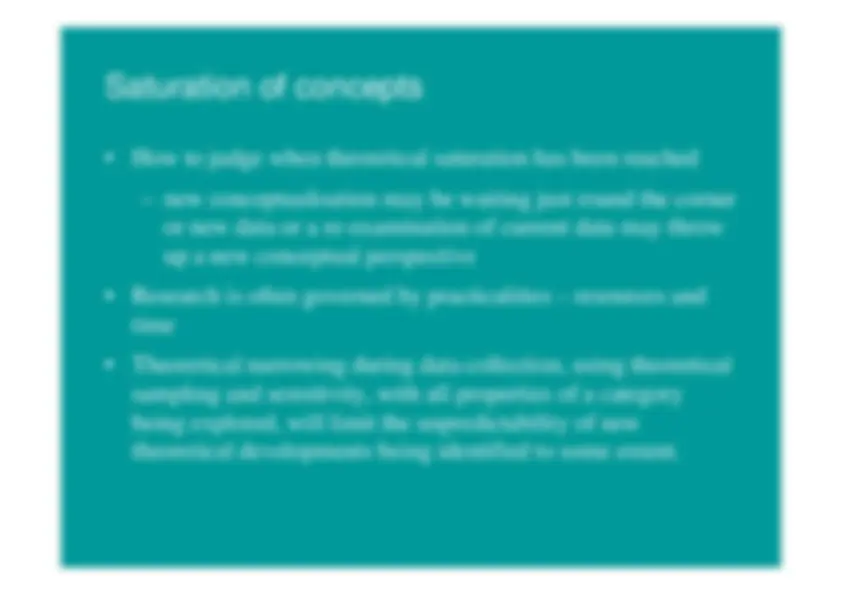

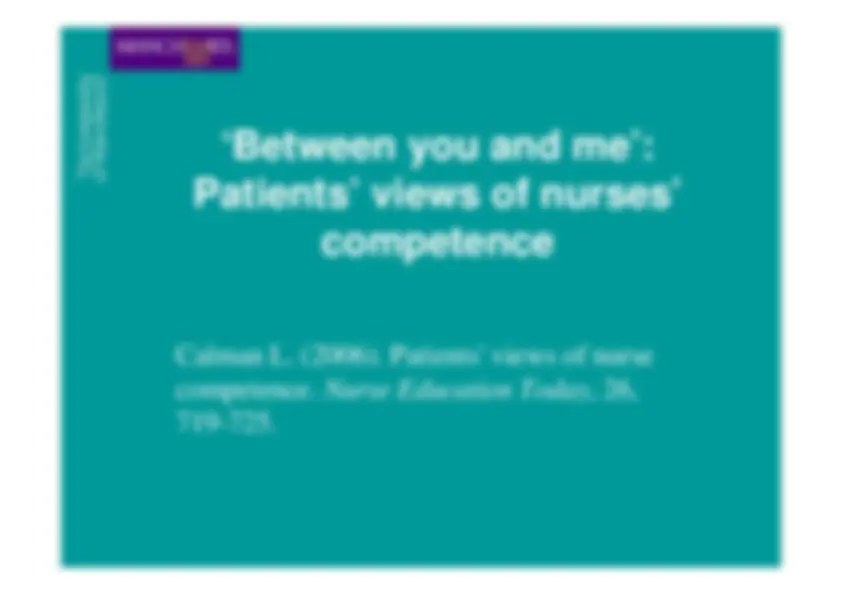
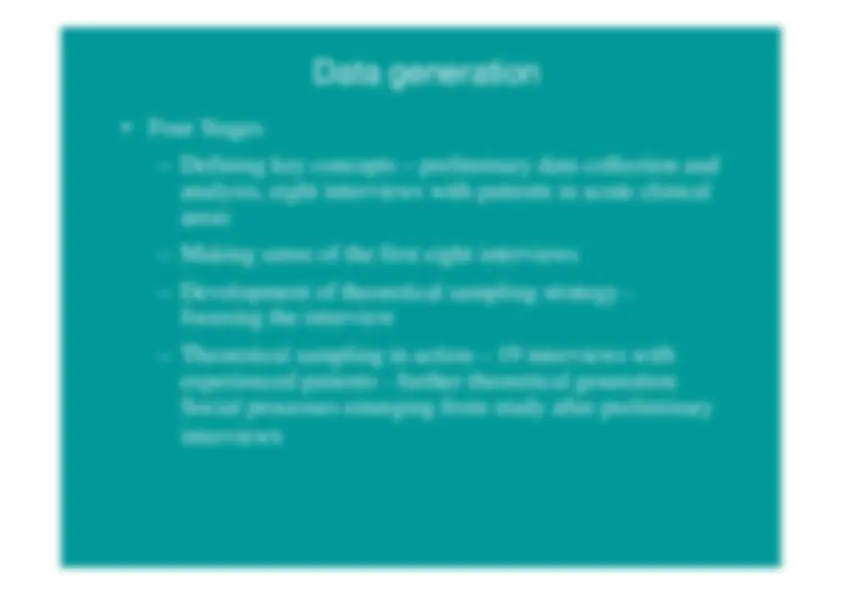
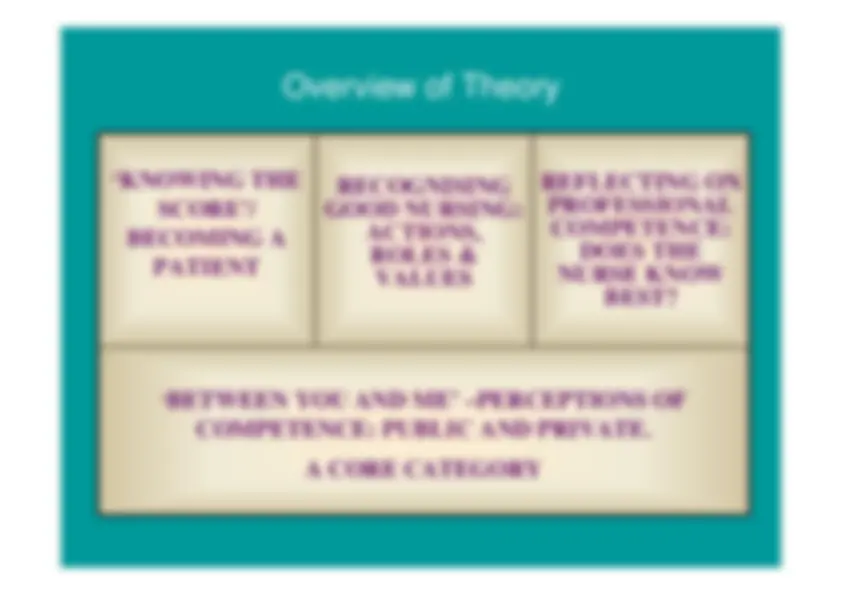



Study with the several resources on Docsity

Earn points by helping other students or get them with a premium plan


Prepare for your exams
Study with the several resources on Docsity

Earn points to download
Earn points by helping other students or get them with a premium plan
Community
Ask the community for help and clear up your study doubts
Discover the best universities in your country according to Docsity users
Free resources
Download our free guides on studying techniques, anxiety management strategies, and thesis advice from Docsity tutors
Grounded theory is a qualitative research methodology developed by Barney Glaser and Anselm Strauss in the 1960s. It aims to discover theories from data systematically obtained from social research, with a focus on uncovering basic social processes and exploring integral social relationships. an overview of the history, features, and data analysis methods of grounded theory.
What you will learn
Typology: Slides
1 / 26

This page cannot be seen from the preview
Don't miss anything!



















2
The aim of grounded theory is: ‘to generate or discover a theory’ (Glaser and Strauss, 1967)
Grounded theory may be defined as: ‘
the discovery of theory from data systematically obtained from social research’
(Glaser and Strauss 1967: 2).
Developed in the School of Nursing, University of CaliforniaSan Francisco by sociologists Glaser and Strauss – Awarenessof Dying
Influenced by Symbolic Interactionism (Blumer 1969: 2)
Human beings act towards things on the basis of themeanings that these things have for them
The meaning of such things is derived from, and arises outof, the social interaction that one has with one’s fellows
These meanings are handled in, and modified through, aninterpretive process used by the person in dealing with thething he encounters.
5
1960’s move from natural science as the foundation of socialresearch – new ways of investigating the social world
Denzin and Lincoln’s – Modernist moment
Realist ontology
epistemology–objective truths, generalisable, testableand verifiable theory
Place of the researched and the researcher
‘discovery of theory’
The move in social science towards postmodernism and post-
structuralism has resulted in GT being attacked for itsobjectivist and positivist foundations.
In later works Glaser and Strauss, take on the language
associated with interpretivisum -? change in foundation
[b]y adopting a constructivist grounded theory approach, theresearcher can move grounded theory methods further into therealm of interpretive social science consistent with a Blumarian(1969) emphasis on meaning, without assuming the existence of aunidimensional external reality
(Charmaz 2000: 521).
•This theoretical perspective may then be able to answer some ofthe criticisms of modernist grounded theory •As in other constructivist methodologies, a constructivist GTarises from interaction between the researcher and participants,the researcher’s perspective being part of the process.
8
Charmaz (1995, 2002) identifies a number of features that all
grounded theories have:
simultaneous collection and analysis of data
creation of analytic codes and categories developed from dataand not by pre-existing conceptualisations (theoreticalsensitivity)
discovery of basic social processes in the data
inductive construction of abstract categories
theoretical sampling to refine categories
writing analytical memos as the stage between coding andwriting
the integration of categories into a theoretical framework.
10
In-depth interviews
Most commonly used
Relies on open ended questions
Questions can be modified to reflect emerging theory
Observational methods
Focus Group
Can be used
Start with topic guide – Broad question (prompts and probes)
Concurrent data collection and analysis
development of categories and components of the theory
narrowing down to area of interest and concern toparticipants - fill out categories
Topic guide will change
To achieve theoretical sensitivity, the researcher must beginwith as few predetermined ideas, particularly hypotheses, aspossible so he or she can be as sensitive to the data as possible.
This does not mean that the researcher must start with atabula rasa, as is often assumed.
An open mind not an empty head (Dey 1999)
it is how prior knowledge is used that makes the difference;- used to inform our analysis rather than to direct it.
Literature can be used as ‘data’ and constantly compared withthe emerging categories to be integrated in the theory (Glaser1992)
is the process of data collection for generating theory wherebythe analyst jointly collects, codes, and analyses his data anddecides what data to collect next and where to find them, inorder to develop theory as it emerges (Glaser and Strauss1967: 45).
Charmaz (1990) suggests that theoretical sampling is best usedwhen some key concepts have been discovered. Initial datacollection is commenced with a fairly ‘random’ group ofpeople, who have experienced the phenomenon under study, tobegin to develop concepts. Theoretical sampling is then usedto generate further data to confirm and refute originalcategories.
open coding refers to the process of generating initialconcepts from data
axial coding to the development and linking of conceptsinto conceptual families- coding paradigm
selective coding to the formalising of these relationshipsinto theoretical frameworks
asking
What is actually happening here?
Under what conditions does this happen?
What is this data a study of?
What category does this incident indicate?
(Glaser 1978)
Glaser (1978) highlights the importance of the core categoryfor grounded theory: [t]he generation of theory occurs around a
core
category.
Without a core category an effort of grounded theory will driftin relevancy and workability (Glaser 1978: 93).
The core category accounts for most of the variation of dataand therefore most other categories relate to it in some way.
The core category is a more highly abstracted category but stillmust remain grounded in the data. The major categories arerelated to the core category and these categories show how thecore category works in the lives of participants.
How it is developed is a bit vague!
Theoretical saturation of concepts is the point at which thedata collection and analysis cycle can conclude
‘saturation means that no additional data are being foundwhereby the sociologist can develop the properties of thecategory’ Glaser and Strauss (1967: 61)
Does not mean exhaustion of data sources (which Dey labelssufficiency rather than saturation) rather than full developmentof a category.